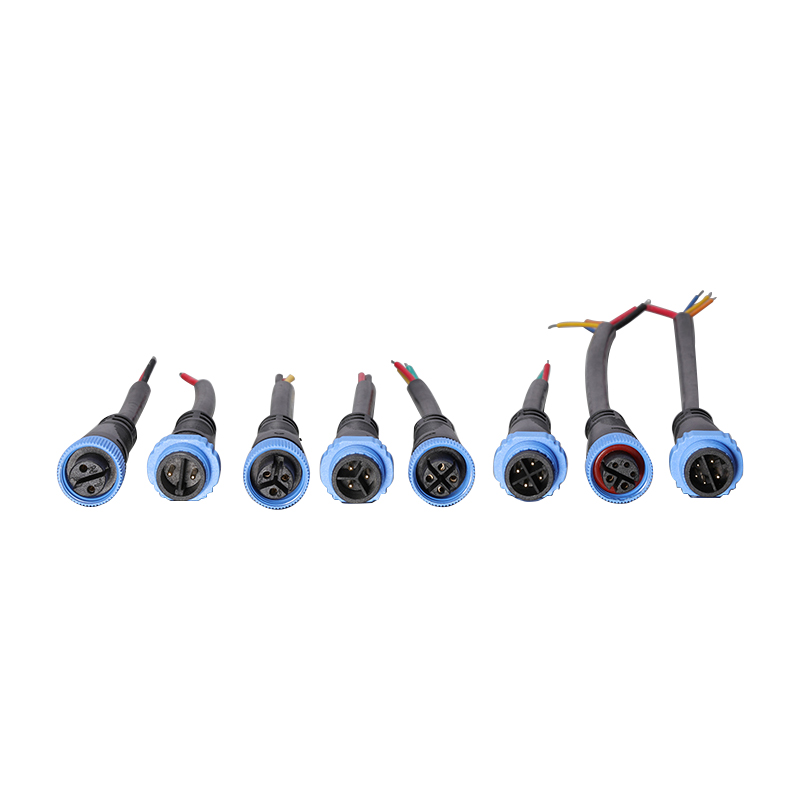News


News

How waterproof wire connectors marine Work: Defying Extreme Marine Environments
Release time:2025-03-18
viewed:368
The reliability of electrical systems in marine environments is critical to vessel safety and performance. From storms and high humidity to saltwater corrosion and constant vibration, marine electrical equipment faces relentless challenges. waterproof wire connectors marine are engineered to overcome these extremes through advanced IP ratings, sealing materials, and structural designs. Here’s how they ensure uninterrupted operation in harsh ocean conditions.

Marine electrical systems must withstand:
High Humidity & Salt Spray: Accelerates metal corrosion and short circuits.
Constant Vibration & Shock: Wave impacts and engine vibrations loosen connections.
Temperature Extremes: From tropical heat to polar cold (-30°C to 70°C).
Water Pressure & Immersion: Submerged connectors face pressures up to 10+ bar in deep-sea applications.
The IP (Ingress Protection) rating system (IEC 60529) defines a connector’s resistance to solids and liquids. Key ratings for waterproof wire connectors marine solutions include:
IP67: Dustproof and submersible up to 1m for 30 minutes.
IP68: Dustproof and submersible beyond 1m (depth/time specified by the manufacturer).
IP69K: Resists high-pressure, high-temperature water jets (e.g., deck cleaning).
Applications:
IP67/IP68: Hull-mounted sensors, underwater lighting, and sonar systems.
IP66: Engine room equipment exposed to splashes.
Note: Lab-tested IP ratings may differ from real-world performance. Combine with robust materials and design.
Properties: Flexible, UV-resistant, handles -50°C to 200°C.
Use: Engine bay connectors, deck lighting.
Properties: Resistant to oil, saltwater, and chemicals.
Use: Harsh zones like bilge pumps or fuel systems.
Properties: Low-cost, easy-to-apply sealing for cables.
Use: Temporary repairs or low-voltage circuits.
Properties: Self-healing, vibration-resistant, and corrosion-proof.
Use: Subsea sensors and high-shock areas.
Mechanism: Precision threads compress seals to block water ingress.
Advantage: Ideal for high-vibration zones (e.g., engine mounts).
Primary Seal: Silicone gaskets at cable entry points.
Secondary Seal: Epoxy potting or O-rings to fill micro-gaps.
Terminal Isolation: Ceramic or thermoplastic barriers prevent cross-circuit shorts.
Mechanism: Push-pull or bayonet locking for fast, secure mating.
Use: Navigation systems, removable sonar modules.
Proper Installation: Clean mating surfaces and torque threads to manufacturer specs.
Routine Inspections: Check seals and housings every 6 months; replace worn FKM gaskets.
Environment Matching: Use IP68/FKM connectors for saltwater immersion, IP67/silicone for deck equipment.
A cargo ship’s GPS system failed during a storm due to corroded connectors. After switching to IP68-rated marine electrical connectors waterproof with FKM seals, the vessel completed 18 months of voyages without a single electrical failure.
waterproof wire connectors marine are the unsung heroes of maritime safety. By combining IP-rated durability, advanced materials, and intelligent design, they ensure critical systems withstand the ocean’s fury. From commercial ships to offshore rigs, these connectors are engineered to deliver reliability where it matters most.